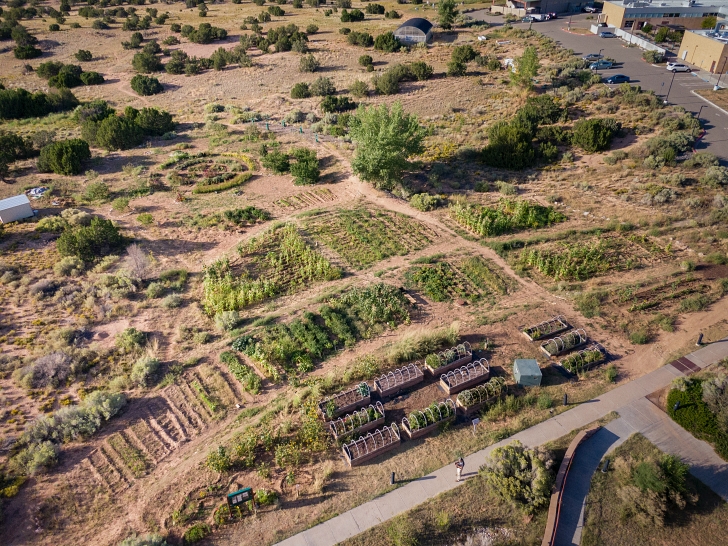The Famous Zuni Waffle Gardens Could Be Coming Back
They’re an extremely efficient form of gardening.
The Zuni Tribe, known today as the A:shiwi, occupy land along the Zuni River, a tributary of the Little Colorado River. Their main pueblos are about 55 miles south of Gallup, New Mexico, but the tribe also has land in Arizona. Estimates on the tribe’s farming activities date their agriculture to around 4,000 years ago. It is estimated that for the last 1,000 of those years the A:shiwi used the waffle gardening technique to make the most of their water resources and grow food in the desert.

Traditional A:shiwi farming used terraced plots and run-off irrigation to utilize their main water resource, the Zuni River. Among the favored crops were corn, beans, squash, cotton, and tobacco.
But, even being close the river, the dry, desert environment meant they had to get creative with their gardening techniques. Their gardens took on a waffle-like appearance, with each plant surrounded by a square of raised soil or a berm. This allowed for water to stay near the plant, making the best use of the limited water they had. For this technique to work a soil with a high concentration of clay is needed as clay holds onto moisture well. Clay deposits are common in Arizona and New Mexico, as evidenced by the A:shiwi tradition of making stunning pottery vessels.

In order to make your own waffle garden you’ll also need to make sure that the ground is level. Any unevenness will mean that some plants get more water than others. The point of this type of gardening is that the water sits where the syrup would go in a waffle. Uneven ground means the some sections will hold more water than others.
Unlike modern gardens where the ground is mulched with bark, gravel is used in waffle gardening. The stone shades the soil underneath and slows evaporation without absorbing any of the precious water into the medium.

The result of making these waffle garden plots was that they looked very interesting, but beyond the novelty factor some folks have been calling for a return to the old ways of this type of agriculture.
The Zuni River was dammed in 1904 and around this time the waffle gardens began to disappear. Some of these gardens were still in use as late as World War II. At that time the increased availability of food from grocery stores meant that gardening was not as necessary for the A:shiwi. However, in recent years the trend towards organic food and home gardening has increased across the country.

Several living history and agricultural education sites have been built over the years to show how waffle gardening can be done. But, given the increased temperatures and widespread droughts in the Western US, a return to waffle gardening could be one solution for how to make a successful home garden – even in extremely dry areas.
SKM: below-content placeholderWhizzco for DOT

